A year of the pandemic has transformed an unprecedented number of homes across the globe into studios, offices, and places of study, and the adaptations of remote work are likely here to stay in a more flexible professional and creative future. Major companies including Twitter and Facebook have already announced plans for permanent remote work options with many others committing to long-term remote work plans. Industrial design students in the Homework class led by Adjunct Associate Professor Linda Celentano investigated what a better work-from-home space could be. Their projects range from furniture specifically designed for organizing a home office to partitions that can create privacy without the severity of a cubicle.
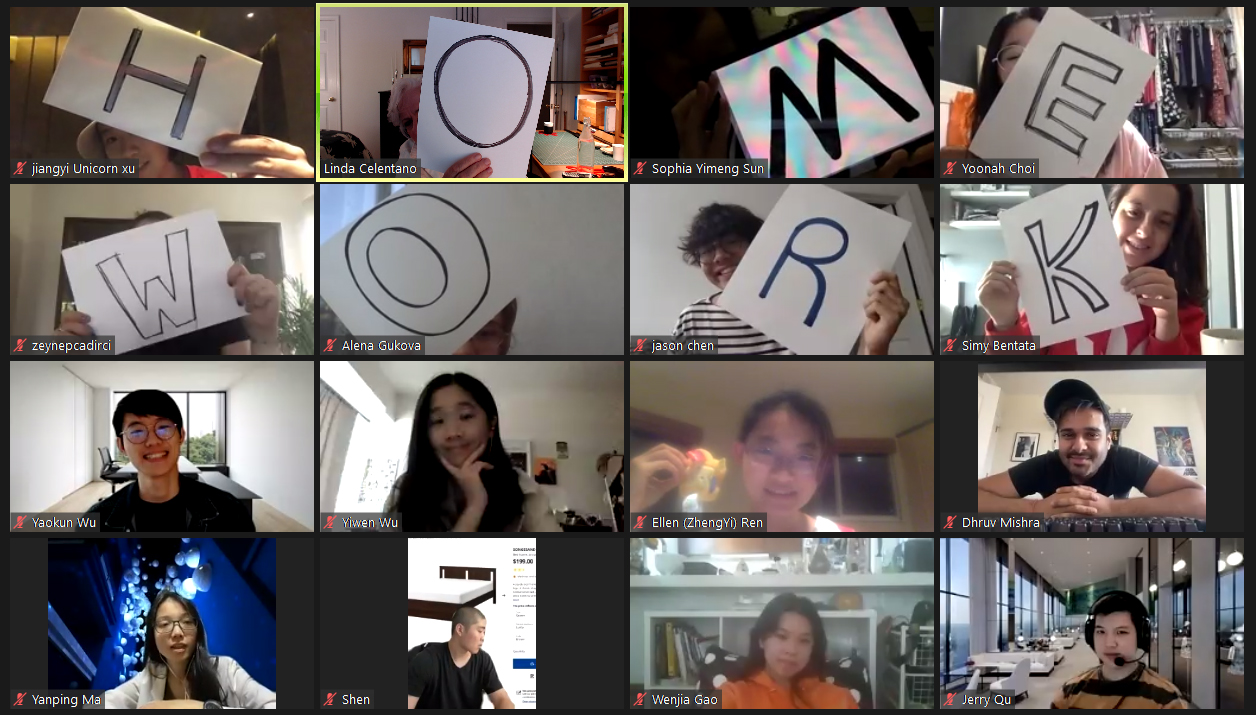
A year of the pandemic has transformed an unprecedented number of homes across the globe into studios, offices, and places of study, and the adaptations of remote work are likely here to stay in a more flexible professional and creative future. Major companies including Twitter and Facebook have already announced plans for permanent remote work options with many others committing to long-term remote work plans. Industrial design students in the Homework class led by Adjunct Associate Professor Linda Celentano investigated what a better work-from-home space could be. Their projects range from furniture specifically designed for organizing a home office to partitions that can create privacy without the severity of a cubicle.
Despite the timeliness of the course, Celentano had the concept for a Prototypes I class themed to working at home before the pandemic hit, partnering on the idea with Chair of Industrial Design Constantin Boym. “Working at home sounded like a worthy enough topic,” she said. “Never in a million years did we think people around the world were about to be working from their kitchens, closets, out of suitcases, and ultimately from their homes because of a virus. What, we now ask ourselves, does a modern-day desk look like? Home is a place, after all, and not just a space.”
The students were themselves navigating their homes as work, study, and classroom spaces and brought this first-hand experience into the two- and three-dimensional modeling of their projects. “Their designs for their environments reflected some of the needs that grew out of an attempt to find a place to work and live,” Celentano said.
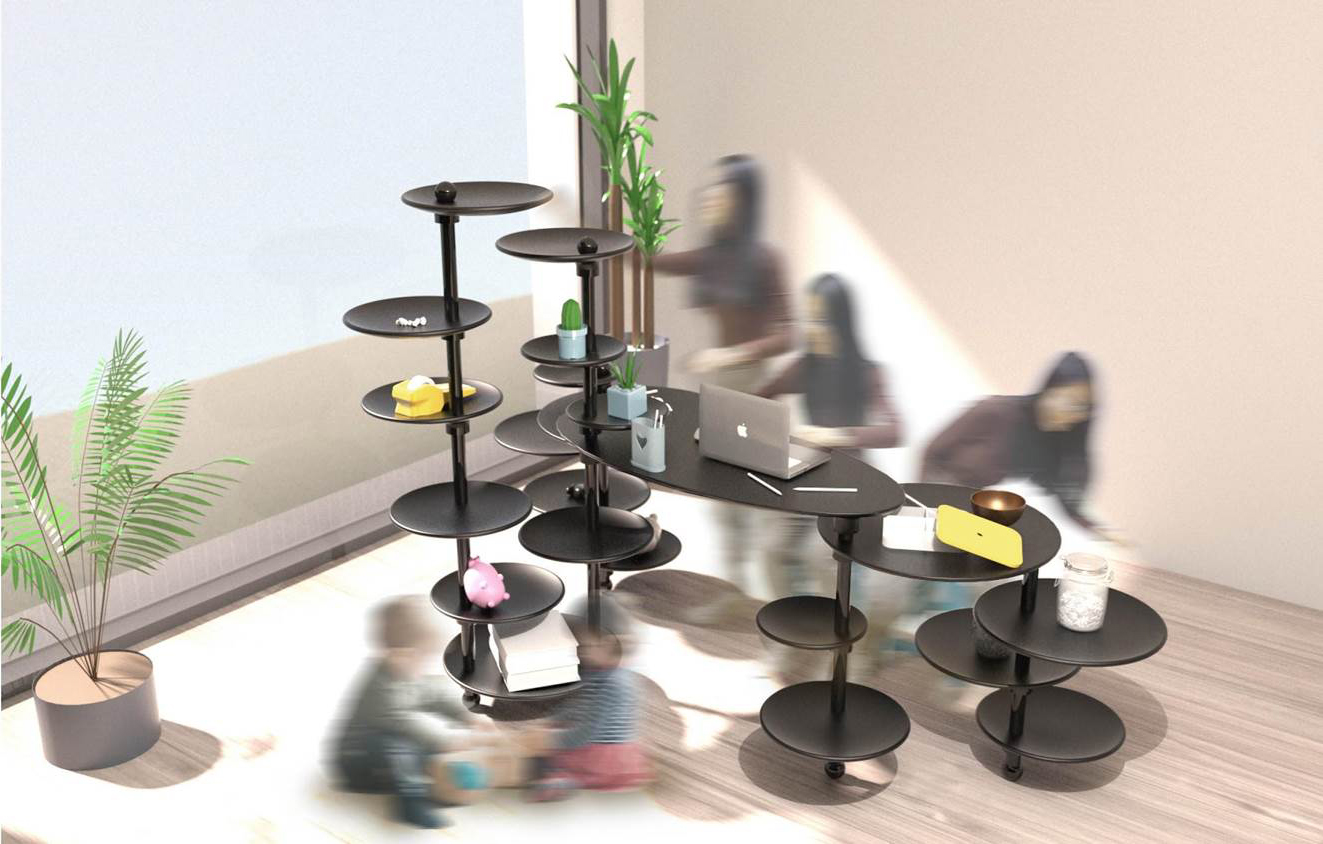
Multi-Task Desk by Yanping Ma, BID ’21
Yanping Ma, BID ’21, envisioned a workplace that would be highly customizable for an individual’s needs across a day. Inspired by the modular approach of German industrial designer Dieter Rams’s influential 1960 606 Universal Shelving System, the tiered Multi-Task Desk has various levels of potential work surfaces for sitting and standing, and smaller shelves for holding snacks and children’s toys, all able to be adjusted for height and orientation. “When working at home, different aspects of our lives come together in one physical location,” Ma said. “This desk is designed to help users sort their thoughts and objects from different aspects of their lives.”
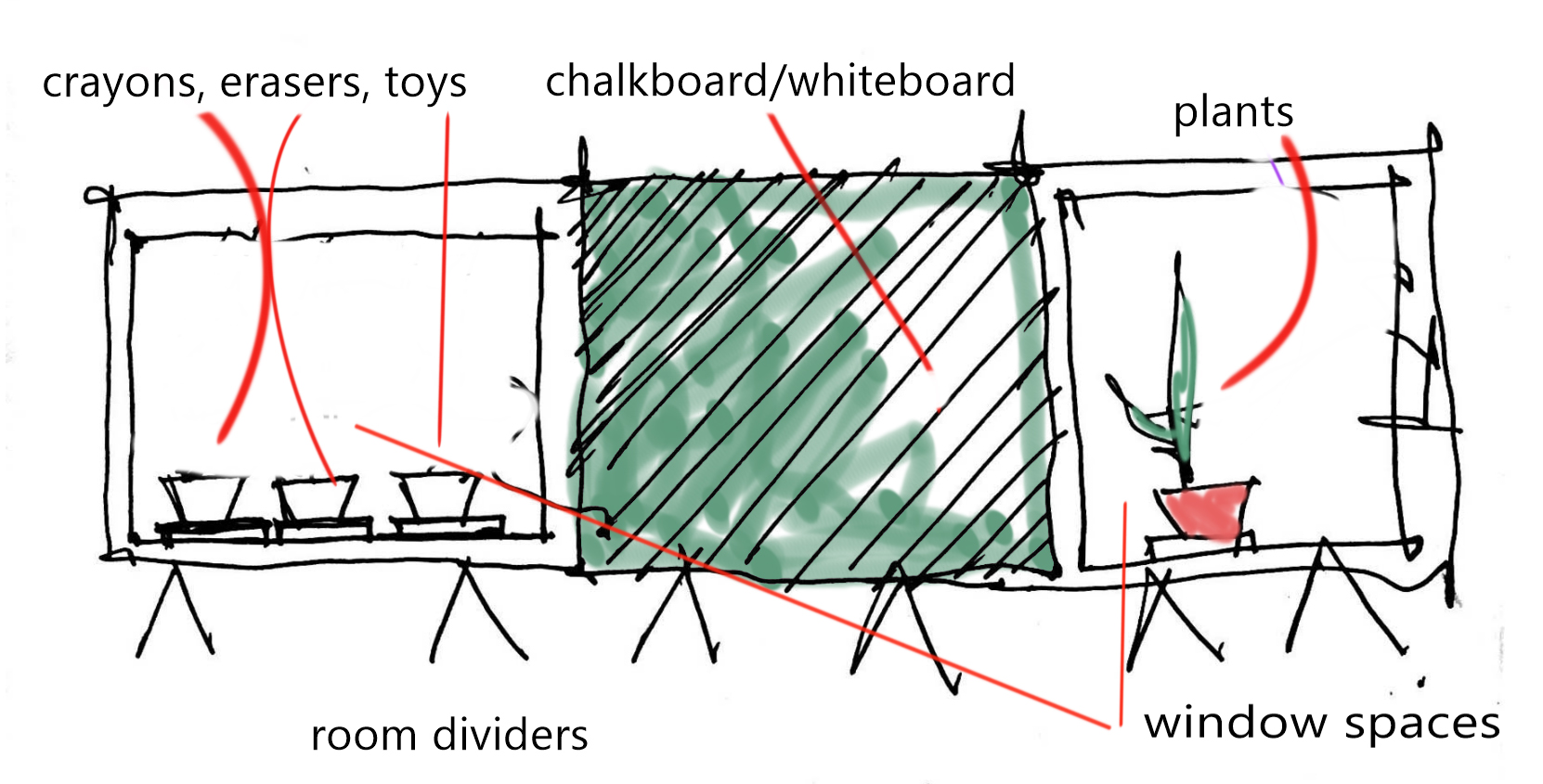
Partition project by Anushritha Yernool Sunil, MID ’22
Anushritha Yernool Sunil, MID ’22, also explored creating a separate home and living space through furniture, focusing on partitions that would have windows to offer both storage and a visual openness while still delineating distinct environments. During the day the plants in a window space could be a Zoom background and the whiteboard could be used for notes while children could read and play on the other side; at night it could be converted into a dining table. “Creating a workspace in especially small apartments and homes has been a creative challenge,” Sunil said. “I was inspired by case studies all over the world—particularly Asia—where home-based work is not new and has been prevalent over many years. My research led me to the problems faced by working moms and caregivers who are struggling to manage various roles in the same space.”
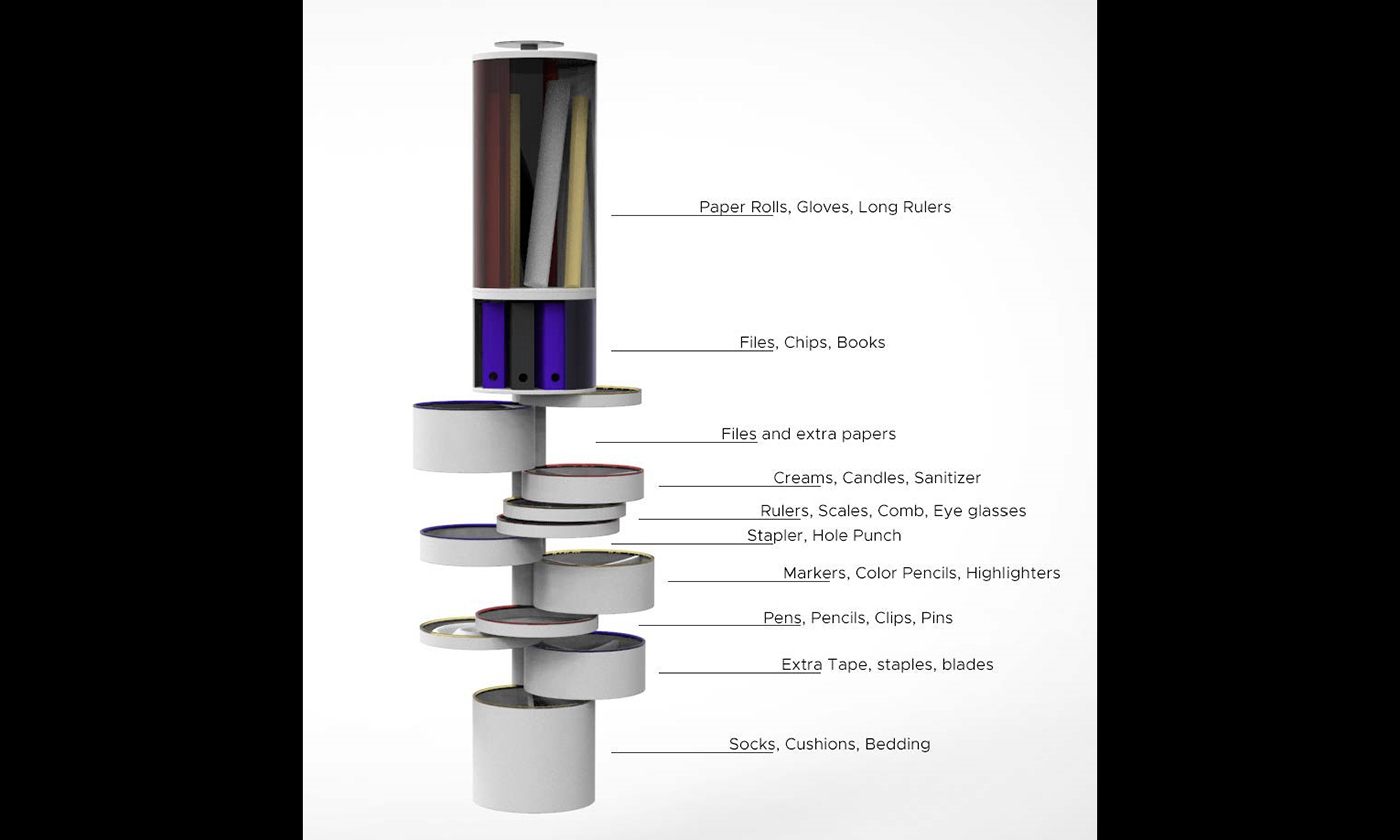
Minar by Dhruv Mishra, MID ’22
Harmonious organization is similarly central to the Minar design by Dhruv Mishra, MID ’22, which involves a column of rotating storage compartments for everything from office supplies to snacks and cushions. “Our offices have taken over space otherwise reserved for personal belongings, blurring the boundaries between work and personal life,” said Mishra. “Working on this project made me realize that we try our best to separate our work and home lives and there can be a place where they can live in co-existence, complementing one another.”
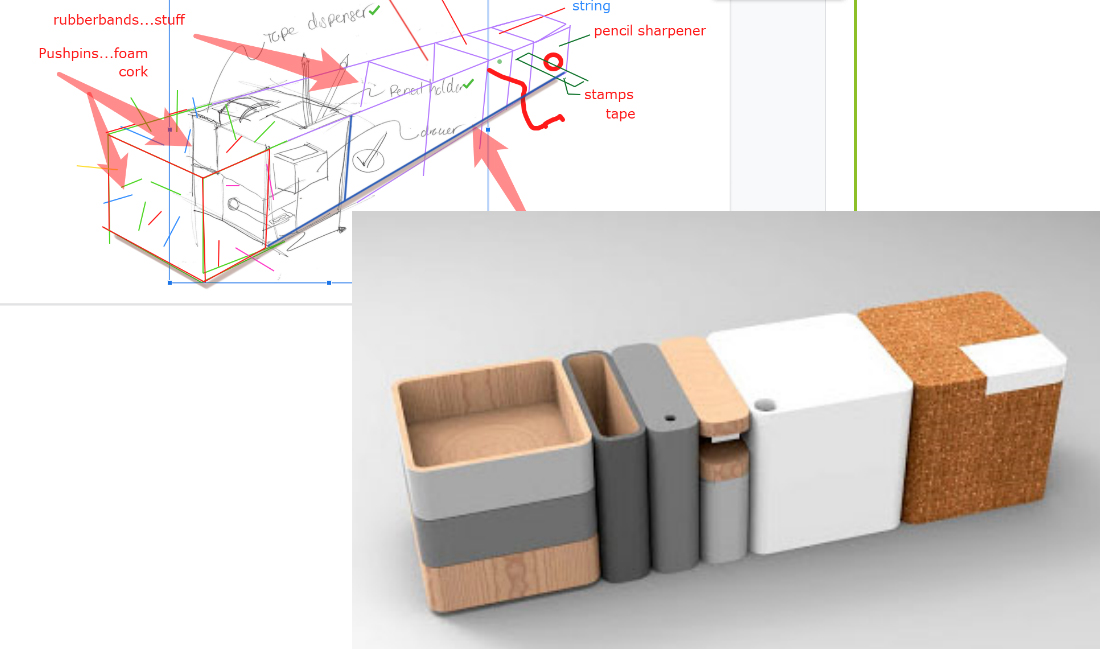
Home organization furniture by Simy Bentata, BID ’21
Employing a modular design for horizontal space, Simy Bentata, BID ’21, developed rectangular objects that could be set up in an orbit around a desk when needed, containing things like stamps and tape and providing surfaces such as a small pushpin board. When work is done, they can be neatly lined up again.
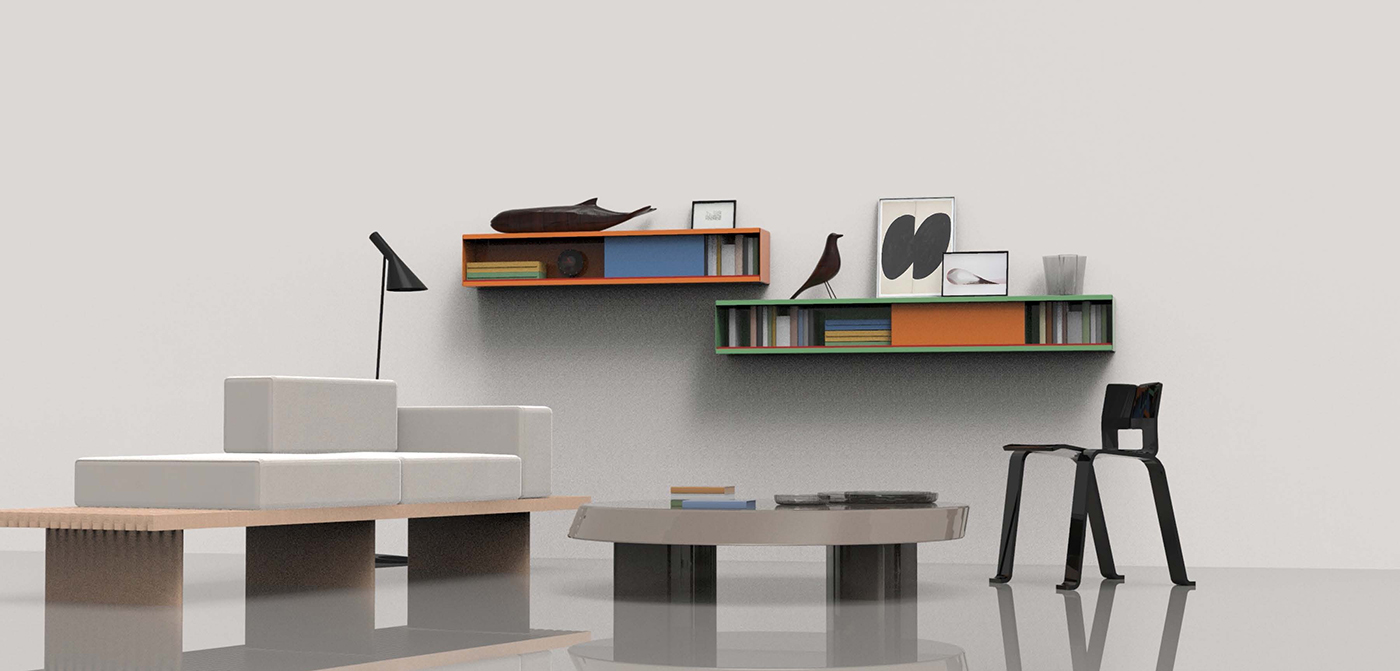
The Relation Shelving System by Jason Chen, BID ’21
Jason Chen, BID ’21, concentrated on flexible storage for a wall, with the Relation Shelving System bringing the home and work environment together while blending easily into a domestic environment. Users could customize the shelving for their storage needs, displaying keepsakes and books while hiding office supplies in the sliding compartments. “Our homes are sanctuaries for our wellbeing,” Chen said. “When work becomes too visible in our homes it begins to manifest a negative relationship to our spaces. Especially in New York City, work from home takes place in our living or dining rooms. I know I personally work on the dining table so I knew it was necessary to create a piece that was of extreme function, that didn’t scream home office in my dining room.”

Curvature Collection by Ellen Zhengyi Ren, BID ’21
Ellen Zhengyi Ren, BID ’21, meanwhile, gave attention to the objects of daily work to make them more playful, tactile, and easy to find amid household clutter. “When all of my family worked from home, we always switched between different tasks like drawing, drafting, and writing and we also used various places as make-shift workstations,” Ren said. “With limited space, all of our tools, supplies, and writing utensils were mixed together.” With shapes inspired by the 3D methodologies of Rowena Reed Kostellow—who established Pratt’s Industrial Design program in the 1930s—Ren’s Curvature Collection containers can rock back and forth without falling over. “They are great for fidgeting when you feel stressed, or simply need something to do with your hands as you focus on your tasks,” Ren said. Their various sizes allow users to carry tape, pencils, paperclips, and papers to wherever they are working that day.
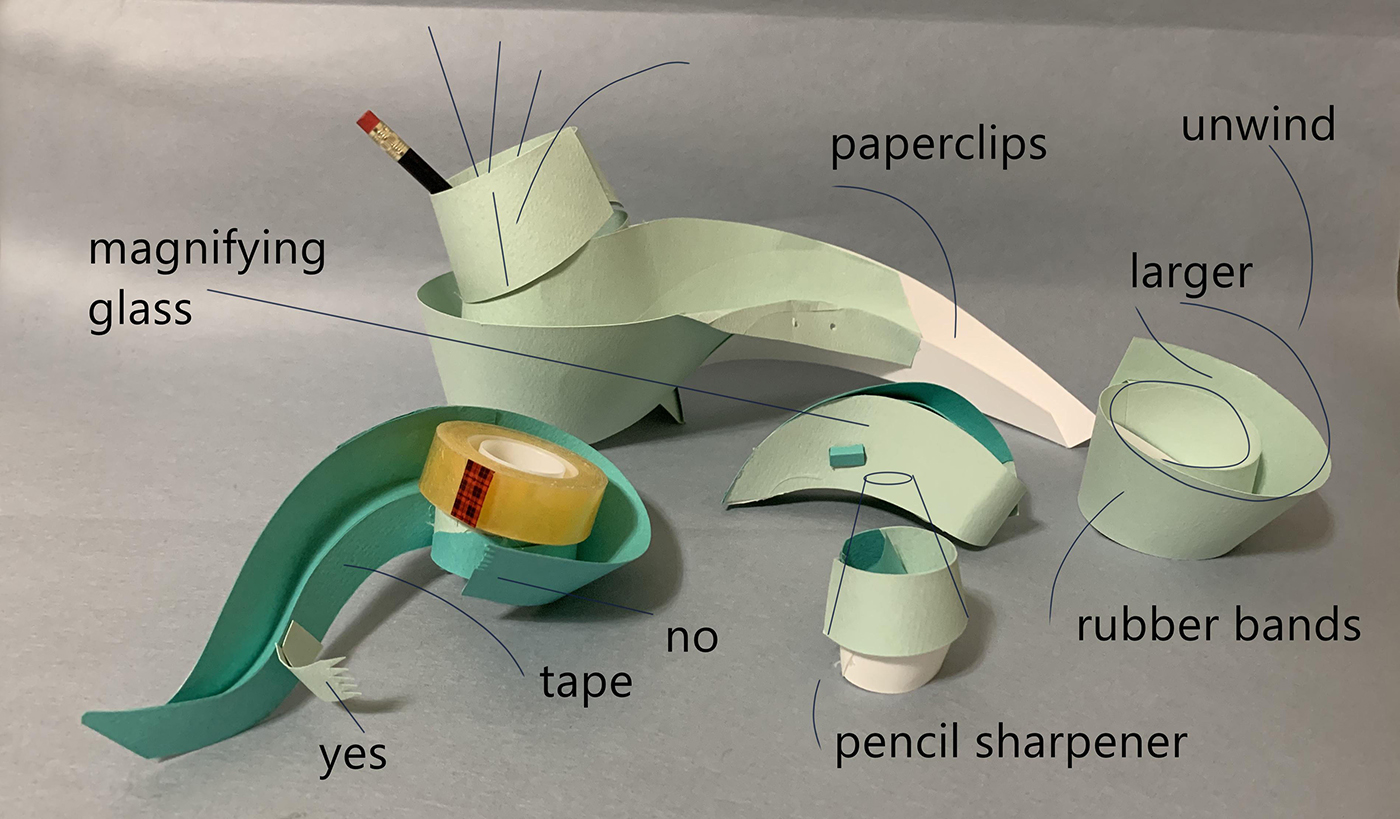
Desk organization objects by Yoonah Choi, BID ’21
Yoonah Choi, BID ’21, modeled office accessories that would be incredibly lightweight while visually distinctive, so at a glance, someone could locate tape or a pencil sharpener in the disarray of a desk (or a kitchen table).
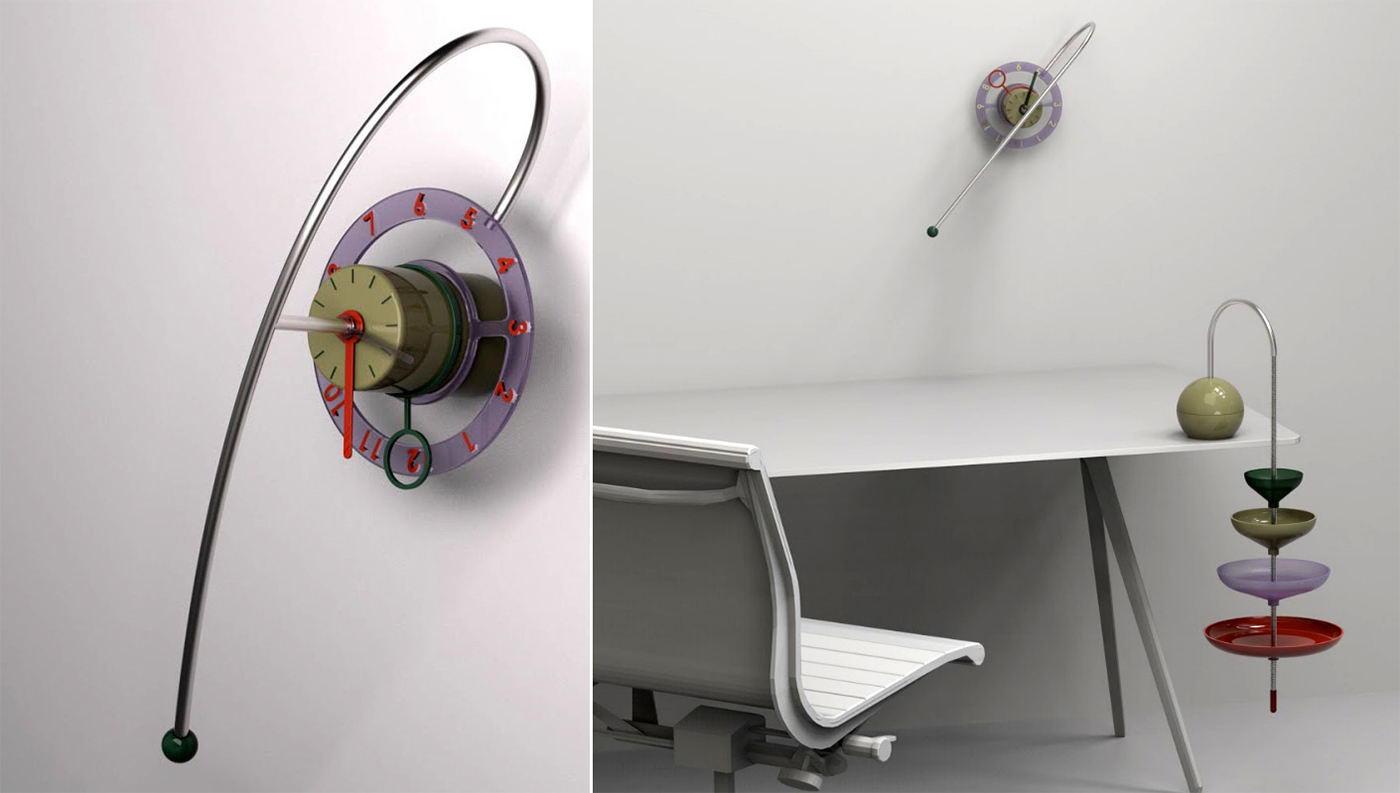
Organizational and “Time Is Precious” designs by Alena Gukova, BID ’21
Alena Gukova, BID ’21, likewise proposed desk organizers that take into account the sometimes limited and busy space of a home, using a threaded rod to hang cone-shaped shelves from a weighted support that could fit onto any available corner.
Through these projects, the students offer ideas for how thoughtful design can improve the balance of work and life both amid the demands of COVID-19 and in the future, so people can get things done while still letting their home be a home.